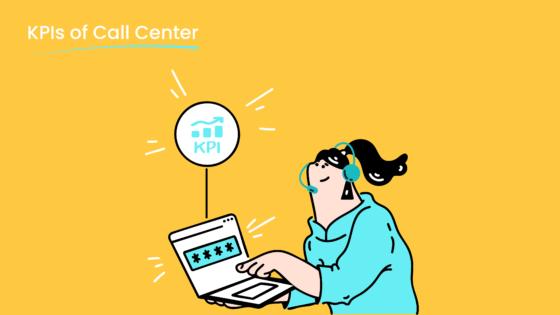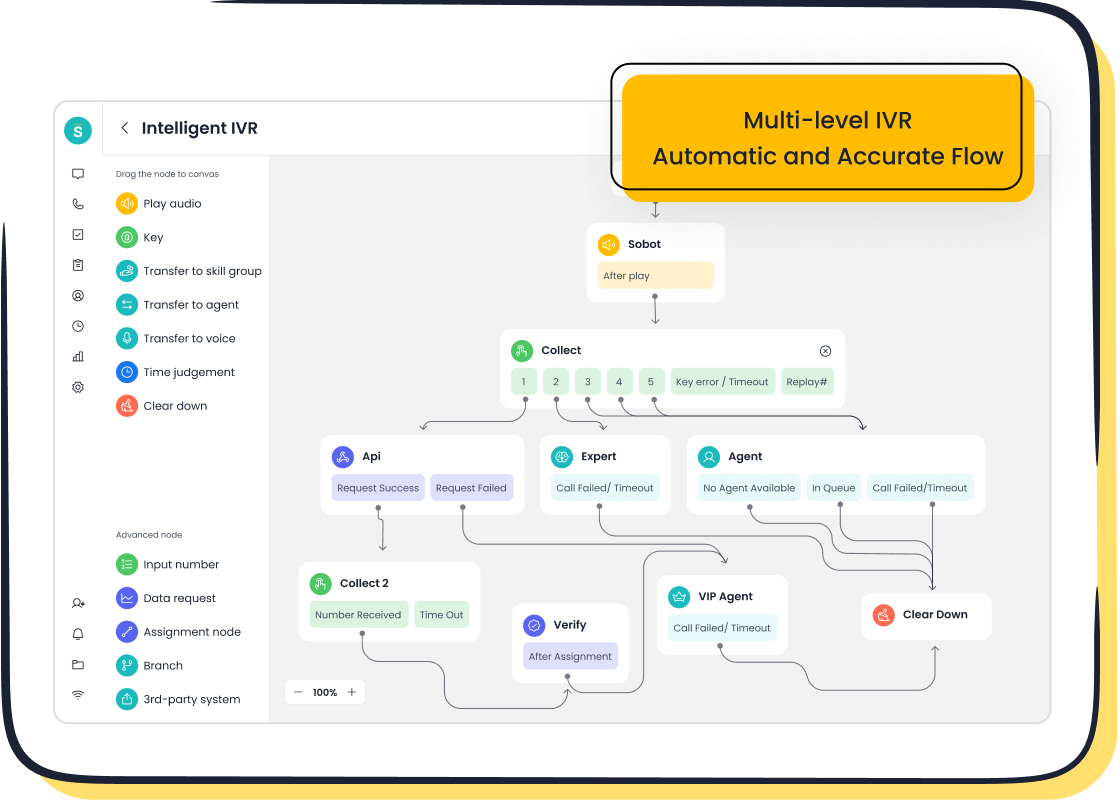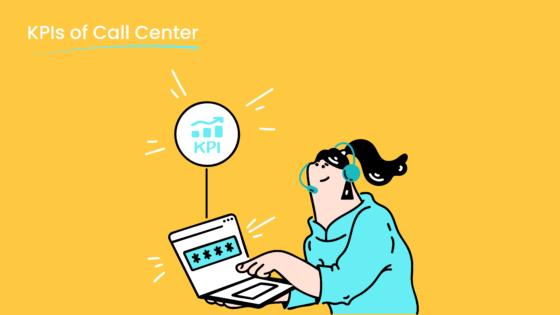How to Handle Upset Customers in Customer Service Roles

Dealing with upset customers can feel overwhelming, but it’s a skill that can transform your customer service approach. Did you know 96% of unhappy customers don’t even complain? Most just leave, taking their loyalty with them. However, when you handle their concerns effectively, 88% are likely to return and even re-purchase. This shows how mastering how to handle an upset customer can directly improve customer satisfaction and loyalty.
Great service isn’t just about solving problems—it’s about creating trust. For example, Xendoo saw a 31.74% boost in sign-ups after enhancing their customer service. Tools like Sobot’s omnichannel solutions make it easier to address issues across platforms, ensuring every interaction builds confidence. When you turn challenges into opportunities, you don’t just fix problems—you create lasting relationships.
Key Principles for Handling Upset Customers
Empathy: The Foundation of Customer Service
Empathy is the cornerstone of excellent customer service. When you show genuine care for your customers' feelings, you create a connection that builds trust. Did you know that 70% of buying experiences are influenced by how customers feel they’re treated? This means your ability to empathize can directly impact their loyalty. For example, when a customer feels heard and understood, they’re more likely to forgive mistakes and continue doing business with you.
Empathy isn’t just about saying, “I understand.” It’s about demonstrating that you genuinely care. Imagine a customer frustrated over a delayed delivery. Instead of jumping straight to solutions, acknowledge their frustration first. A simple, “I can see how this delay has been inconvenient for you,” can go a long way. Tools like Sobot’s omnichannel solution make it easier to track customer interactions across platforms, helping you personalize responses and show you truly understand their needs.
Active Listening: Understanding Customer Concerns
Active listening is more than just hearing words—it’s about understanding the emotions and concerns behind them. When you actively listen, you make customers feel valued. This approach not only builds trust but also helps you identify the root cause of their frustration. Studies show that 35% of customers feel angry during service interactions. By listening carefully, you can turn that anger into satisfaction.
Here’s how you can practice active listening: focus on what the customer is saying without interrupting, repeat key points to confirm understanding, and ask clarifying questions. For instance, if a customer says, “I’ve been waiting for hours for a response,” you might reply, “I understand you’ve been waiting longer than expected. Let me check what happened and resolve this for you.” Sobot’s AI-powered tools can assist by providing agents with real-time insights, ensuring no detail is overlooked.
Professionalism: Staying Calm Under Pressure
Handling angry customers requires professionalism. Staying calm, even when emotions run high, shows you’re in control and committed to resolving the issue. Research highlights that 43% of customers have raised their voice during service interactions. Your ability to remain composed can de-escalate tension and keep the conversation productive.

Professionalism also involves using neutral language to avoid escalating the situation. Instead of saying, “You’re wrong,” try, “Let’s look into this together.” Maintaining a calm tone reassures the customer that you’re focused on finding a solution. Sobot’s Voice/Call Center equips agents with tools like call monitoring and AI-powered voicebots, helping them manage difficult conversations effectively. These features ensure you can handle even the toughest situations with confidence.
Step-by-Step Guide to Managing Difficult Customers
Greeting Upset Customers with Positivity
First impressions matter, especially when dealing with difficult customers. A warm and positive greeting can set the tone for a successful resolution. Start by introducing yourself and your company. For example, say, “Good afternoon, this is Alex from Sobot. May I have your name, please?” This simple act shows respect and creates a personal connection.
Using friendly language can also defuse tension. Phrases like “Absolutely” or “I can see how that would be frustrating” validate the customer’s feelings and make them feel heard. Acts of goodwill, such as offering a small discount or an extra service, can turn a negative experience into a positive one. Following up after the interaction further reassures the customer that their experience matters.

Sobot’s Voice/Call Center makes this process seamless. With features like intelligent IVR and AI-powered voicebots, you can greet customers warmly and route them to the right agent quickly. These tools help you make the caller happy from the very first interaction.
Using the HEARD Method for Resolving Issues
The HEARD method—Hear, Empathize, Apologize, Resolve, and Diagnose—is a proven approach to handling difficult customers. It ensures that you address their concerns thoroughly while maintaining professionalism. Start by actively listening to the customer’s issue. Show empathy by acknowledging their frustration, and offer a sincere apology for the inconvenience.
Next, focus on resolving the problem. Provide a clear and actionable solution, and explain the steps you’ll take to prevent the issue from recurring. For example, if a customer complains about delayed service, you might say, “I’ll expedite your request and ensure it’s completed within the next 24 hours.” Finally, diagnose the root cause to avoid similar issues in the future.
This method not only enhances the customer experience but also reduces escalations and builds trust. Sobot’s omnichannel solution supports this approach by consolidating customer data, enabling you to provide personalized and efficient service across all channels.
Offering Clear Solutions and Setting Expectations
Clarity is key when resolving customer issues. Difficult customers often feel frustrated because they don’t know what to expect. Be transparent about what you can do and set realistic timelines. For instance, if a product replacement will take five days, let the customer know upfront. Managing expectations prevents misunderstandings and builds trust.
Here’s a quick example of how clear solutions improve satisfaction:
| Issue | Solution |
|---|---|
| Unrealistic expectations | Manage expectations by ensuring promises are realistic and achievable. |
| Inconsistent information | Centralized self-service resources to provide consistent information. |
| Lack of proactive service | Anticipate customer needs to enhance client experience and build loyalty. |
Sobot’s AI-powered tools, like its unified workspace, help you deliver consistent information and set clear expectations. These features ensure you’re always prepared to offer an ideal resolution, leaving customers satisfied and loyal.
Following Up to Ensure Satisfaction
Following up with customers after resolving their issues is a crucial step in ensuring they feel valued and satisfied. It’s not just about closing the case—it’s about showing that you care about their experience and want to make things right. This extra effort can turn a previously upset customer into a loyal advocate for your brand.
Here are some effective follow-up techniques you can use:
- Reach out personally to remind customers of the value of your product or service and ask for their opinions.
- Send follow-up emails that include FAQs or instructional videos to help them get the most out of your offerings.
- Use surveys to gather feedback from both satisfied and dissatisfied customers. This helps you improve future interactions and refine your conflict resolution strategies.
When you follow up, keep the tone friendly and genuine. For example, you could say, “Hi [Customer Name], I just wanted to check in and make sure everything is working well for you now. Is there anything else I can assist you with?” This simple gesture can leave a lasting impression.
Sobot’s tools make following up seamless. With features like automated email templates and customer feedback forms, you can easily stay connected with your customers. These tools also help you track responses, ensuring no one slips through the cracks. By using these resources, you can strengthen your conflict resolution process and build trust with your customers.
Remember, following up isn’t just a nice-to-have—it’s a must-do. It shows your customers that their satisfaction matters to you, even after the initial issue is resolved.
De-escalation Strategies for Handling an Irate Customer

Dealing with angry customers can feel like walking on eggshells, but with the right de-escalation strategies, you can turn tense moments into opportunities for resolution. Let’s explore how you can identify triggers, use neutral language, and redirect conversations toward solutions.
Identifying Triggers and Warning Signs
Recognizing the early signs of frustration is key to preventing escalation. Pay attention to emotional intensity and the frequency of negative keywords during interactions. For example:
| Key Factor | Description |
|---|---|
| Emotional Intensity | Strongly expressed feelings often signal potential escalation. |
| Frequency of Negative Keywords | Repeated use of negative terms indicates dissatisfaction and a downward trend in sentiment. |
When you notice these signs, take a step back and assess the situation. A customer repeatedly saying, “This is unacceptable,” is likely feeling unheard. Acknowledge their frustration and show you’re ready to help. Tools like Sobot’s Voice/Call Center can track call sentiment in real time, helping you identify these triggers early and respond effectively.
Neutral Language: Diffusing Tension
Words matter, especially when emotions run high. Using neutral language can help de-escalate tense situations. Instead of saying, “You’re wrong,” try, “Let’s figure this out together.” This approach keeps the conversation collaborative rather than confrontational.
Here’s a quick breakdown of effective communication techniques:
| Evidence Type | Description |
|---|---|
| Non-provocative Language | Clear, non-accusatory words reduce tension. |
| Calming Phrases | Statements like “I understand how you feel” foster empathy. |
| Acknowledging Emotions | Recognizing feelings lowers defenses and promotes dialogue. |
Sobot’s AI-powered tools, like its omnichannel solution, can guide you with suggested responses, ensuring your language remains calm and professional. These tools help you focus on resolving the issue without escalating the conflict.
Redirecting Conversations Toward Solutions
When dealing with angry customers, it’s easy to get stuck in a loop of complaints. Redirecting the conversation toward solutions can break this cycle. Start by asking, “What can I do to make this right for you?” This shifts the focus from the problem to the resolution.
Focusing on solutions benefits both you and the customer:
- Cost Reduction: Resolving issues in one interaction saves time and money.
- Improved Efficiency: Addressing root causes leads to faster resolutions.
- Increased Customer Satisfaction: Companies like Sprint reduced service costs by 33% while improving satisfaction by focusing on solutions.
Sobot’s unified workspace consolidates customer data, helping you identify the root cause of issues quickly. This allows you to offer clear, actionable solutions, leaving customers feeling valued and heard.
By mastering these de-escalation techniques, you can handle an irate customer with confidence, turning even the most difficult customers into loyal advocates.
Real-Life Scenarios: How to Handle an Upset Customer

Resolving Billing Disputes with Sobot Voice/Call Center
Billing disputes can quickly escalate if not handled with care. When a customer calls about an unexpected charge, start by listening attentively. Acknowledge their frustration and apologize for the inconvenience. For example, you might say, “I understand how unexpected charges can be upsetting. Let me look into this for you.”

Using tools like Sobot’s Voice/Call Center can make this process smoother. Its intelligent IVR system routes calls to the right agent, ensuring customers don’t have to repeat their concerns. Agents can access a unified workspace with all customer details, making it easier to identify the issue and provide a resolution. Transparency is key—explain the steps you’ll take to resolve the dispute and set clear expectations. For instance, let the customer know when they can expect a refund or adjustment. Following up after the resolution shows you value their trust and loyalty.
Addressing Product Complaints Using Omnichannel Solutions
Product complaints often stem from unmet expectations. Whether it’s a defective item or a misleading description, customers want their concerns addressed promptly. Start by empathizing with their situation. A simple, “I’m sorry this product didn’t meet your expectations,” can go a long way.
Sobot’s omnichannel solution is perfect for managing such complaints. It consolidates customer interactions across platforms like email, social media, and live chat into one workspace. This ensures agents have all the information they need to address the issue effectively. For example, if a customer reports a defective product via email, the agent can quickly access their purchase history and offer a replacement or refund. Tracking metrics like CSAT and NPS can also help identify recurring issues, enabling you to improve product quality and customer satisfaction.
Managing Delayed Service Issues with AI-Powered Tools
Delayed services can frustrate even the most patient customers. When addressing these situations, start by explaining the reason for the delay and apologizing sincerely. For example, “I’m sorry for the delay in processing your request. We’re experiencing higher-than-usual demand, but I’ll prioritize your case.”

AI-powered tools like Sobot’s Voice/Call Center can help resolve such issues faster. These tools automate repetitive tasks, allowing agents to focus on complex problems. AI automation has been shown to resolve tickets 52% faster, saving time for both customers and agents. By using these tools, you can provide real-time updates and ensure customers feel informed and valued throughout the process.
Tips for Staying Calm and Professional in Customer Service
Stress Management Techniques for Customer Service Agents
Handling angry customers can be stressful, but managing your stress is essential to staying professional. You can start by creating a supportive work environment. Open communication with your team and managers can help you feel heard and valued. Taking short breaks during your shift also gives you time to recharge and refocus. Even a few minutes away from your desk can make a big difference.
Training is another key to managing stress. When you know how to handle objections or calm the caller, you’ll feel more confident in tough situations. Growth opportunities, like learning new skills or using AI tools, can also reduce stress by making your job easier. For example, Sobot’s AI-powered solutions automate repetitive tasks, giving you more time to focus on resolving customer concerns.
Remember, stress management isn’t just about what happens at work. Taking care of yourself outside of work—like getting enough sleep and exercising—helps you stay calm under pressure.
Emotional Intelligence: Navigating Difficult Interactions
Emotional intelligence is your secret weapon for dealing with an angry customer. It helps you understand their frustrations and respond in a way that builds trust. Empathy is a big part of this. When you show customers you understand their feelings, it’s easier to resolve conflicts. For example, saying, “I can see why this situation is upsetting,” can instantly make them feel heard.
Self-control is just as important. Staying calm when emotions run high shows professionalism and keeps the conversation productive. Experience helps you get better at this over time, but you can also practice by focusing on your breathing or pausing before you respond. Managing your emotions helps you handle angry customers effectively and strengthens your relationships with them.
Effective Communication Skills for Upset Customers
Good communication can turn an upset customer into a loyal one. Start by listening carefully to their concerns. Let them finish speaking before you respond, and repeat back what you’ve heard to show you understand. For example, you might say, “So, you’re frustrated because your order hasn’t arrived yet. Is that correct?”
Acknowledging their feelings is also important. A simple, “I’m sorry this happened,” can go a long way. Once you’ve addressed their emotions, focus on solutions. Offering clear options, like a replacement or a discount, shows you’re committed to making things right. Sobot’s tools, like its unified workspace, make it easy to track customer issues and provide consistent answers.
By mastering these skills, you’ll not only calm the caller but also build trust and loyalty.
Handling upset customers isn’t just about solving problems—it’s about creating trust and loyalty. By practicing empathy, active listening, and professionalism, you can turn even the toughest situations into opportunities to strengthen relationships.
Remember, every challenge is a chance to show your customers they matter.
When you approach interactions with care and clear solutions, you don’t just resolve issues—you build lasting connections. So, embrace these moments as opportunities to grow, both as a professional and as a brand ambassador. You’ve got this!
FAQ
What should I do if a customer refuses to calm down?
Stay calm and professional. Use neutral language to avoid escalating the situation. If needed, politely offer to escalate the issue to a supervisor. This shows you’re taking their concerns seriously while maintaining control of the conversation.
How can I handle a customer who keeps interrupting me?
Let them finish speaking before responding. Acknowledge their frustration with phrases like, “I understand your concern.” Then, calmly guide the conversation back to the issue. Tools like Sobot’s Voice/Call Center can help you stay organized and focused during such interactions.
Should I apologize even if the issue wasn’t my fault?
Yes! A sincere apology shows empathy and helps diffuse tension. For example, say, “I’m sorry this happened to you. Let’s work on fixing it.” Customers care more about solutions than blame, so focus on resolving their concerns.
How do I handle a customer complaint on social media?
Respond quickly and professionally. Acknowledge their concern publicly, then move the conversation to a private channel. Sobot’s omnichannel solution makes it easy to manage social media complaints and provide timely resolutions.
Can following up really make a difference?
Absolutely! Following up shows you care about their experience. A simple email or call can turn a negative interaction into a positive one. Use tools like Sobot’s automated follow-up features to make this process seamless and effective. 😊
See Also
Enhancing Customer Satisfaction Through Effective Live Chat Strategies
Top Practices for Ensuring Quality in Call Center Management
Effective Strategies for Managing Live Chat Support Agents
Essential Principles for Quality Management Systems in Call Centers
